Leave a Comment
Leave a Reply
Please login to post a comment.
On one occasion, we messed up quite a bit, rolling through the domains of Alto Tajo.
We miscalculated the time to the next shelter, adding to the adventure a storm, one of those loaded with icy water, violent gusts of wind, and thunder that shakes the ground.
The next day we woke up under a tarpaulin as an emergency bivouac, after a rough night, with our feet soaked and two very strong desires.
For the warm sun of dawn to come out after a cut from the mountain.
And above all, a good bowl of oatmeal and freshly brewed steaming coffee.
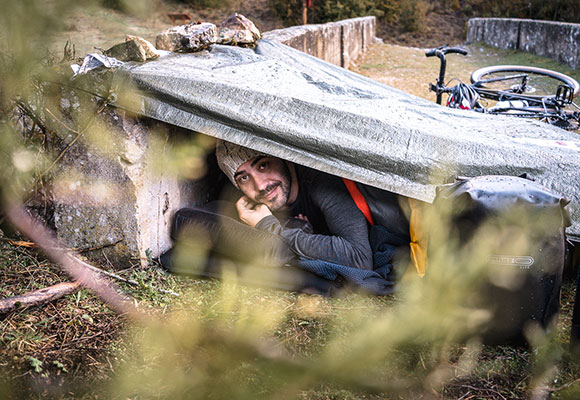
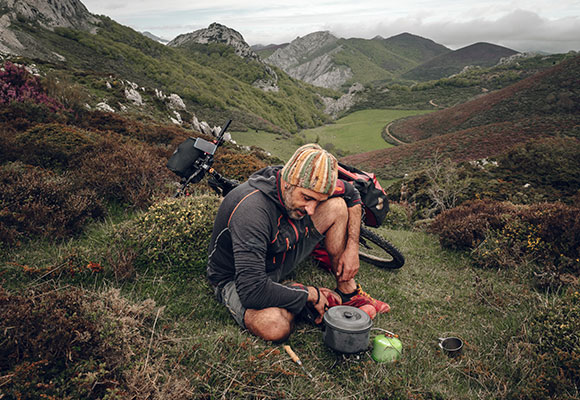
The cooking set is a must-have that I always have to carry with me on my bikepacking outings, and in this post, I'm going to share with you the different stoves I use and my experience with them.
ALSO, AT THE END, I'LL SHOW YOU HOW TO MAKE AN EMERGENCY STOVE SO YOU NEVER HAVE TO GO WITHOUT A HOT DINNER.
Probably the most well-known and my primary choice on most of my outings, spanning from single days to several weeks or even months. I always opt for this when I'm in a region where it's easy to find and purchase replacements.
Essentially, it's a burner screwed onto a single-use gas cartridge.
I've tried super minimalist formats, small and lightweight, and others a bit larger where the burner is attached to the cartridge with a sleeve and has foldable legs that provide a lot of stability.
Personally, I prefer the latter. Sacrificing a bit more space and weight, they feel much safer and more comfortable to me, and you don't risk having dinner spilled on the ground with an elbow or a wrong move (I can attest to how infuriating that can be).
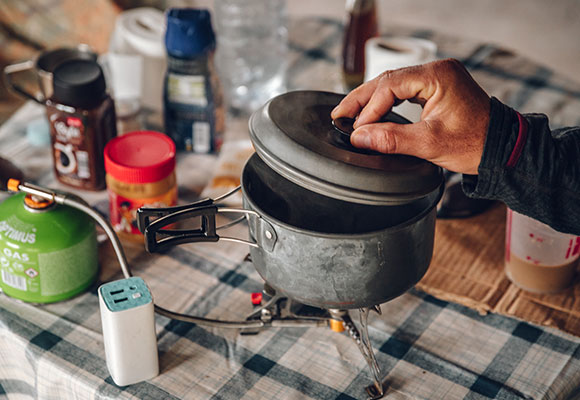
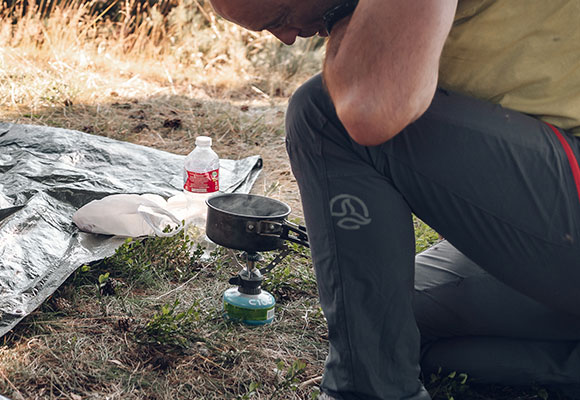
ADVANTAGES:
Lightweight, clean, and very practical.
Easy to transport.
DISADVANTAGES:
In some countries or regions, it's impossible to find replacement cartridges.
Generates waste with empty cartridges.
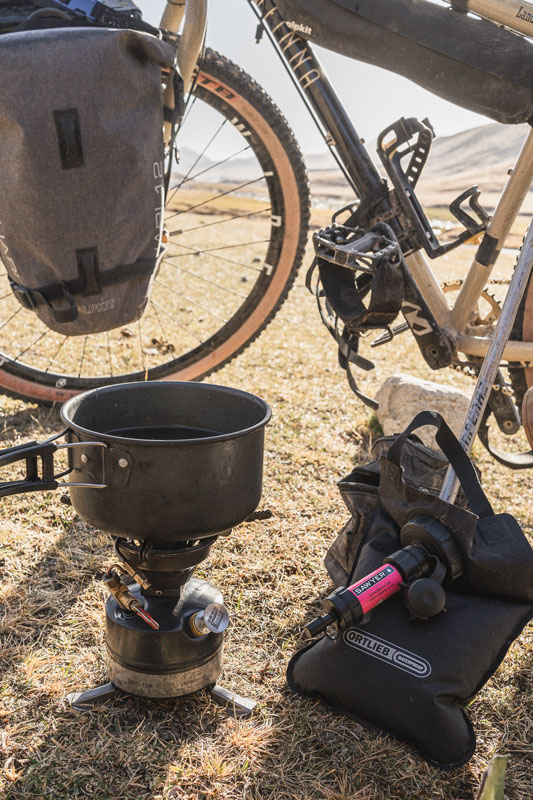
It's the stove I take on a long journey to remote regions where it's impossible to find replacement gas cartridges. Some models allow the use of different fuels by changing certain parts, but they are mainly designed to burn gasoline.
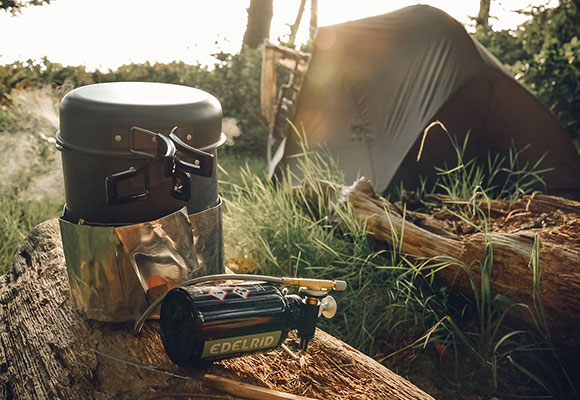
ADVANTAGES:
- They use gasoline which you can find all over the world. Even in the remotest corner of the Peruvian Puna, there will be a neighbor selling gasoline repackaged in reused soda bottles.
- Boil water super fast. High calorific power even at 4000-5000 meters above sea level.
- The fuel is very cheap. Half a liter of gasoline can last up to 2 weeks of use.
DISADVANTAGES:
- They are more laborious to use because they require two previous steps before operating. First, pump air to pressurize the fuel bottle. Second, preheat the coil that will convert the liquid gasoline into gas.
- They tend to be bulkier and heavier.
- They require regular maintenance as they tend to clog with fuel impurities.
- Additionally, it is common to hear complaints that they are dirty and smell bad, this is because preheating is usually done by burning liquid gasoline.
- Here's a great tip: carry a small bottle of 98% alcohol and use it for preheating. It doesn't smell at all and leaves no soot.
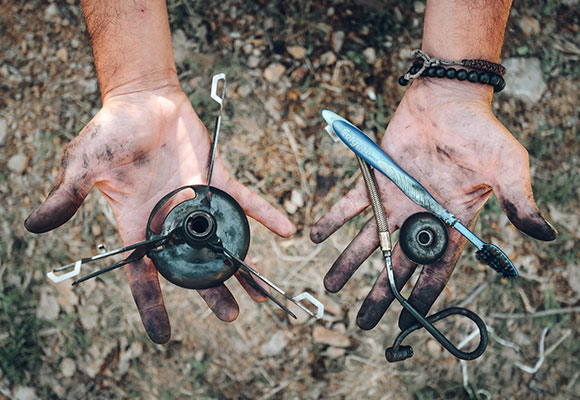
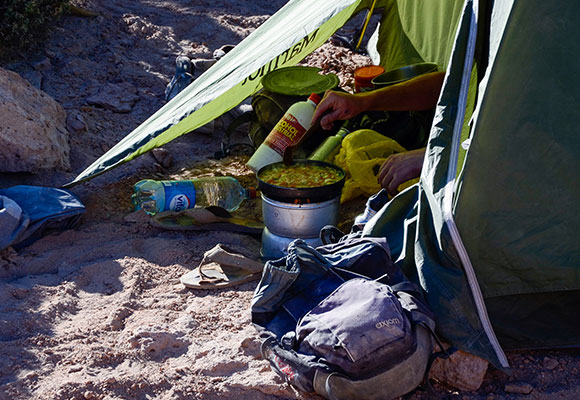
I remember the poor quality of Turkish gasoline clogged my MSR multifuel stove and an alcohol stove, which I'll show you how to make next, saved my sacred dinner spaghetti until I could repair the main stove.
The system is extremely simple, from the well-known Trangia to ones you can make yourself with a can.
An alcohol stove essentially consists of a burner container with some flame diffusion system.
ADVANTAGES
- Super simple mechanism. You can make one yourself.
- There are ultra-light models weighing just a few grams.
DISADVANTAGES
- Low heat output, sometimes it can take quite a while to boil water.
- Depending on the country, it's not always easy to find alcohol with a high enough proof.
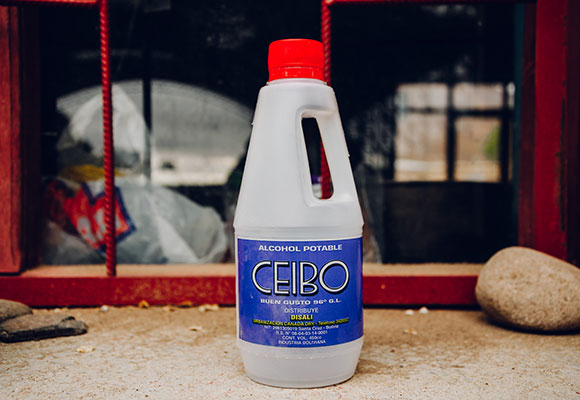
There are several models you can find with a quick search on the internet, but this one is one of my favorites.
You only need a can, and it's relatively easy to make with a camping knife. Once done, you just have to find a pharmacy or supermarket to get the alcohol, and you're ready to go.

Please sign in first.
Sign inCreate a free account to use wishlists.
Sign in